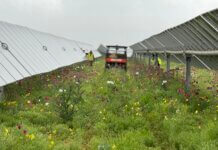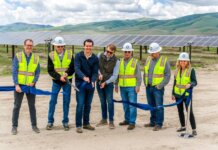LandGate has published a study on the state of solar development in West Virginia, with a look at both potential and current activity within the region.
The study evaluates solar development in the state through the lens of federal and local regulations, available incentives, grid interconnection and integration.
The company says findings include a breakdown of how to access federal and state incentives and an analysis of the states interconnection standards.
The report further found that solar development in West Virginia was not prioritized due to the state’s focus on coal production. However, recent federal and state policies such as the Federal Investment Tax Credit and Inflation Reduction Act have promoted development since 2018.
“Although West Virginia currently has no operating utility-scale solar farms, the state has one of the largest pipelines for future utility-scale solar development with 70 MW capacity for planned projects, approximately 6,240 MW capacity for 86 queued projects and 455 MW capacity for ten site control projects,” says Yoann Hispa, CEO of LandGate.
“Overall, if all planned, queued, and site control farms go into operating status, West Virginia will expand its capacity by an estimated 6,765 MW.”




